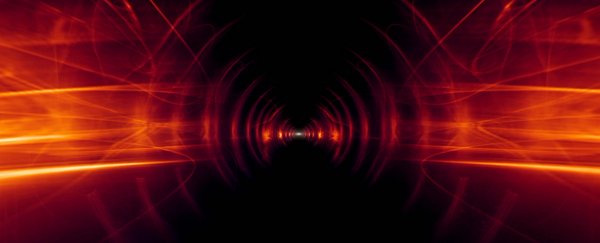Scientists have just performed the world's most precisely controlled chemical reaction, sticking together just two atoms from elements that wouldn't normally form a molecule.
The two elements - sodium and caesium - produced an interesting alloy-like molecule. On top of that, this method of creation could set the way of making just the kind of materials we might need in future technology.
A team of Harvard University scientists used laser 'tweezers' to manipulate individual atoms of the two alkali metals into close proximity, and provided a photon to help them bond into a single molecule.
Chemical reactions are usually hit-and-miss affairs, where vast numbers of atoms are thrown together under the right conditions, and probability does the rest.
This 'stochastic' method of chemical reactions is all well and good if the combination of elements are a decent match. But when scientists want a really exotic pairing, they need to get creative.
Sodium (Na) and caesium (Cs) are both found in the same group on the periodic table - as you may remember from high school chemistry, it means they tend to have similar reactive properties.
They also don't tend to bump into each other and easily bond as a molecule.
Which is really a shame – the polarised electrical properties of a molecule of NaCs would make it super useful for storing quantum 'qubit' states of superposition that can also interact easily with other components.
This all-in-one combination of qubit storage plus interaction is something desperately needed in future technology.
"The direction of quantum information processing is one of the things we're excited about," says lead researcher and chemist Kang-Kuen Ni.
Improbable doesn't mean impossible, though: if these two atoms happen to be close enough with the right energy, a connection can form.
To achieve this perfect mix of energy and timing, the researchers held single atoms in overlapping magneto-optical traps and pelted them with photons to cool them down to a fraction of a degree above absolute zero.
Meanwhile, they used a pair of lasers tuned to create an electrical effect, causing each atom to move towards each laser's focus, as if they were pulled into two sci-fi tractor beams.
Nearby, the two atoms can collide easily. This still doesn't necessarily guarantee they'll bond, given the need to conserve the right momentum and energy levels.
It's a tricky juggle of conditions, one the researchers managed using the right laser pulses.
The end result is a brief flicker of a bond between two atoms in the same quantum state, providing the researchers with details on what's happening on an extremely fine level.
Ni says the next step would be to create longer lasting molecules by combining them while in a ground state, rather than an excited one.
"I think that a lot of scientists will follow, now that we have shown what is possible," says Ni.
The ultimate goal would be to tailor the creation of far more complex molecules, making use not only of their classical shapes but creating tiny quantum components for the next generation of computing.
And for this kind of construction, nothing can be left to sheer chance.
"The experimental demonstration represents for the first time that a chemical reaction process is deterministically controlled," Jun Ye of the US National Institute of Standards and Technology told David Bradley from Chemistryworld.
Though Ye wasn't part of the study, he expressed excitement over the results.
"Control of molecular interactions, including reaction, at the most fundamental level has been a long-standing goal in physical science."
This research was published in Science.
